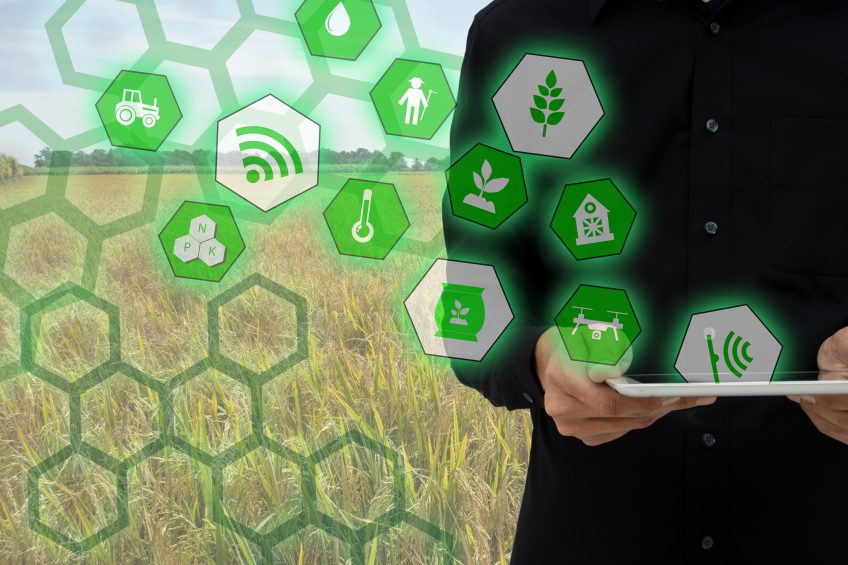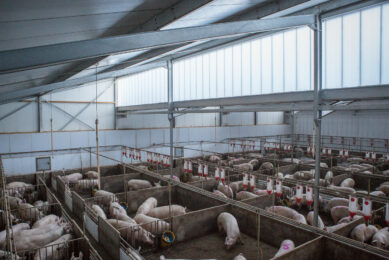Reducing antibiotic use with technology

Technology and software is helping to improve the health and welfare of livestock, but can also help in reducing antibiotic usage by picking up on illnesses or underperformance before human observations can.
The over-use of antibiotics has been a major topic in the media recently, with claims that usage in animals reduces efficacy in humans. Despite there being very little evidence backing these claims, it has been proven that overuse of antibiotics in livestock can subsequently lead to them becoming ineffective in the treatment of animals, due to a resistance build up.
This is a major drawback for farmers because it means they are throwing valuable money at an inoperative resource, something which cannot be sustainably afforded in most farming situations. The overuse of sub-therapeutic antibiotics in concentrated animal feed operations can also cause ecological instability, leading to resistance in animals. To prevent this issue spreading further, the EU has banned certain antimicrobial growth promoters since 2006.
Antibiotic use in livestock
Though antibiotic usage in animals is relatively high, accounting for 44% of all antibiotic use in the UK in 2013, its use in humans is still higher, at 56%. Of this 44%, 61.4m animals were domesticated pets, while over 1bn were livestock and poultry. However, while poultry meat production rose by 5% between 2012 and 2015, the use of antibiotics in the poultry meat sector fell by 43%. Vaccinating animals against disease can help reduce antibiotic use, and also has benefits to humans, with salmonella vaccination in poultry reducing human cases by 54% in the EU since 2004.
In the US, all livestock must be kept out of the food chain for between one and 60 days after the use of antibiotics. This withdrawal period allows for all antibiotic residues to be completely removed from the body before it enters the market. The Food and Safety Inspection Service also requires that once an animal has been treated with antibiotics, it is removed from the main herd and must not be marketed as antibiotic free. Similar practices are enacted around the world to prevent antibiotics from getting anywhere near the food chain.
In the UK, there have been calls by vets for dairy farmers to stop using critically important antibiotics in animals by 2020, except in exceptional circumstances. The fear is that continued widespread use will lead to restrictive legislation that farmers will not be ready to adopt.
Though it is possible to raise animals completely antibiotic free, cutting antibiotics out can potentially lead to higher mortality and secondary effects brought on by illness, such as poor gut integrity, stress, reduced water and feed intake and subsequently increased days taken to reach market. So, in order to cut down on antibiotic usage without compromising herd health and productivity, farmers need to optimise biosecurity and provide the animals with enhanced nutrition and welfare standards, something that software and technology can help with.
Data solution problem solving
In order to reduce antibiotic usage, it is vital to track an animal’s health, ensuring it is not developing any signs of sickness and that it is eating and drinking properly. In order to do this, data can be continually collected from animals and then analysed by software that the farmer can have readily to hand. A number of options are already available that do this and more are being developed. If used correctly, devices can provide timely diagnoses, helping to decrease economic losses.
Wearable devices are able to detect sweat constituents, pH and stress, measure body temperature, and analyse sound, along with other functions. The global growth of wearable technological products used for animal health monitoring is predicted to soar from $ 0.91 billion in 2016, to $ 2.6 billion over the next 10 years.

Biosensors, largely produced for health status and disease diagnosis in humans, are now emerging into the livestock industry. The integration of precision livestock farming techniques is still largely in the developing stages and is often restricted to the dairy or poultry industry, but other sectors are likely to follow. Some of the technologies being developed include microfluids, sound analysers, image-detection techniques, serodiagnosis, sweat and salivary sensing.
Biosensors have been identified as a useful tool to detect antibiotic levels in an animal and to warn the farmer if these are high. Biosensors could also help provide rapid on-farm diagnosis to pick up on any disease outbreaks as fast as possible. This is something the World Organisation for Animal Health (OIE) and food safety agencies are especially keen on, as it can prevent disease reaching humans.
Biosensors work by detecting the absence or presence of chemicals or biomarkers, monitoring glucose, proteins, enzymes or testing for harmful chemicals using bionanotechnology and microelectronics devices which are located within or on the body of the animal. Different types of biosensor technology include microfluids; which rapidly detect clinical chemistry and can reduce the risk of cross contamination.
Technology available on the market
Other technologies being developed to detect animal health and welfare come in the form of sound analysers that can pick up on stress levels in chickens, cows and pigs. Metabolic activity can also be monitored, which flags up a number of issues including fertility, fatty liver, ketosis, displaced abomasum, metritis and a retained placenta. Temperature monitors can indicate pregnancy, birth and lactation, while saliva and breath monitoring have been used for clinical analysis as the amount of oxygen and nitric acid in breath can be indicative of health conditions. These types of technology, in some form or another, are largely available on the market, in the form of neck collars, bracelets, internal boluses or detection strips.
A lot of these systems can aid farm monitoring as the raw data is uploaded to a software system that is accessible via dashboards on mobile phones, computers and tablets. This reduces the need for conventional methods, such as keeping a diary or writing notes. A number of apps have been developed to do just this, collating information and translating it to something useable for the farmer.
The importance of economics
As always, economics play a vital role in any potential technological investment on farm. If a farmer has to buy several devices to monitor different behaviours or physiological conditions, it could become an extremely expensive investment, one that most farmers are unlikely to be able to justify or afford. Often, scientists develop the idea but move onto something else before it becomes practical for use on-farm. The gap between research and industry therefore needs to be bridged to allow practical technology to reach farmers.
Animals must also be able to function naturally with any devices, without the risk of damaging them. This is where technology such as internal boluses are very useful, as after the initial installation, the animal is neither aware of it, nor able to cause damage to it. However, should it malfunction, it is unlikely to be fixable. Though minimising antibiotic use is a target many vets and farmers are attempting to achieve, removing them completely can lead to an increased risk of exposure to bacteria and pathogens. Using technology to achieve the right balance is therefore essential. The real need is to integrate the available technology into an efficient online system that functions in real-time, so farmers can act upon any changes to their animals without delay.






